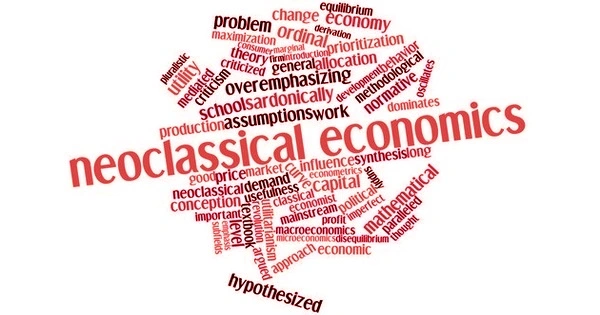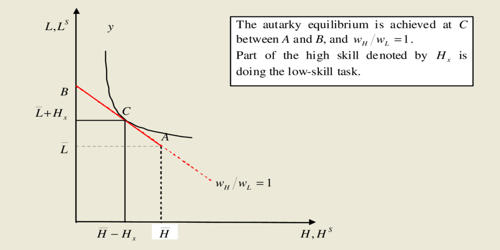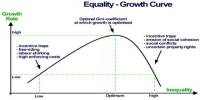The theory of supply and demand as the driving forces behind the production, pricing, and consumption of goods and services is known as neoclassical economics. Neoclassical economics is a school of thought in which the supply and demand model is used to explain the production, consumption, and valuation (pricing) of goods and services. It first appeared around 1900 to compete with classical economic theories.
This school of thought holds that the value of a good or service is determined by a hypothetical maximization of utility by income-constrained individuals and of profits by firms facing production costs and employing available information and factors of production. This approach has often been justified by appealing to rational choice theory, a theory that has come under considerable question in recent years.
Assumptions of Neoclassical Economics
Under the umbrella of neoclassical economics, there are numerous branches that employ various approaches. All of the approaches are predicated on three key assumptions:
- People make rational decisions when choosing between identifiable and value-associated outcomes.
- The purpose of an individual is to maximize utility, whereas the purpose of a company is to maximize profits.
- People act independently when they have complete (and relevant) information.
Various studies and approaches have been developed based on the fundamental assumptions stated above. Utility maximization, for example, can explain the demand for a product or service. Pricing and the distribution of production factors are explained by the interaction of demand and supply.
History
Neoclassical economics theories, as well as Keynesian economics, underpin modern-day economics. From the 1950s to the 1970s, neoclassical economics dominated microeconomics and, together with Keynesian economics, formed the neoclassical synthesis that dominated mainstream economics as “neo-Keynesian economics.” Although the neoclassical approach is the most widely taught economic theory, it is not without its detractors.
From the 1970s to the 1990s, it competed with new Keynesian economics as new classical macroeconomics in explaining macroeconomic phenomena, until it was identified as part of the new neoclassical synthesis alongside new Keynesianism. Many critiques of neoclassical economics have been made, some of which have been incorporated into newer versions of neoclassical theory, while others remain distinct fields.
Furthermore, neoclassical economics states that a product or service frequently has value in excess of its production costs. While classical economic theory holds that a product’s value is determined by the cost of materials plus the cost of labor, neoclassical economists contend that consumer perceptions of a product’s value influence its price and demand.
Finally, according to this economic theory, competition leads to an efficient allocation of resources within an economy. Market equilibrium is created by the forces of supply and demand. Unlike Keynesian economics, neoclassical economics holds that savings determine investment. It concludes that market equilibrium and full employment growth should be the primary economic priorities of the government.
















